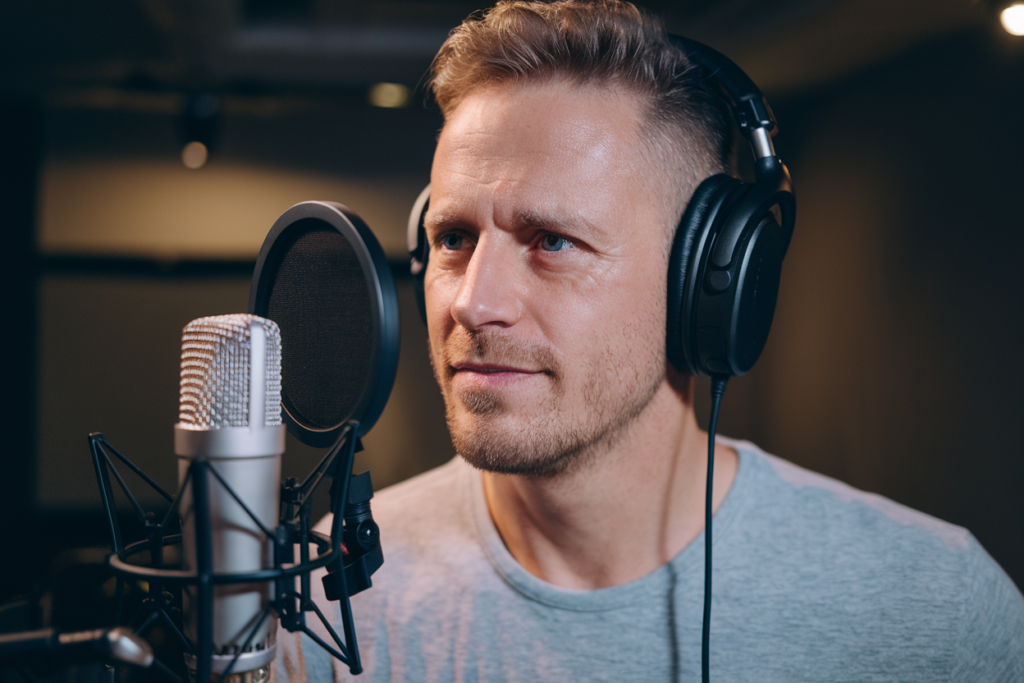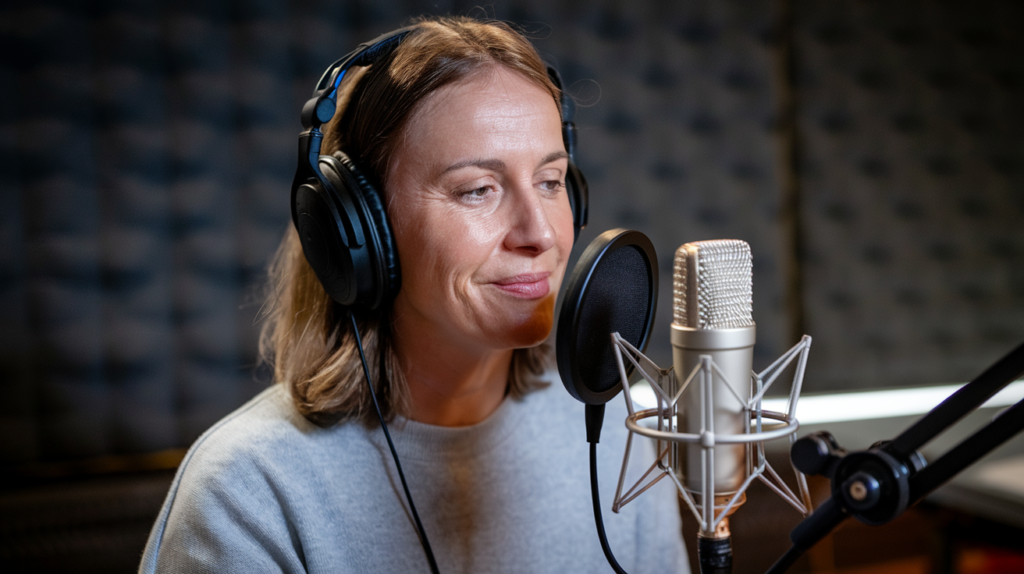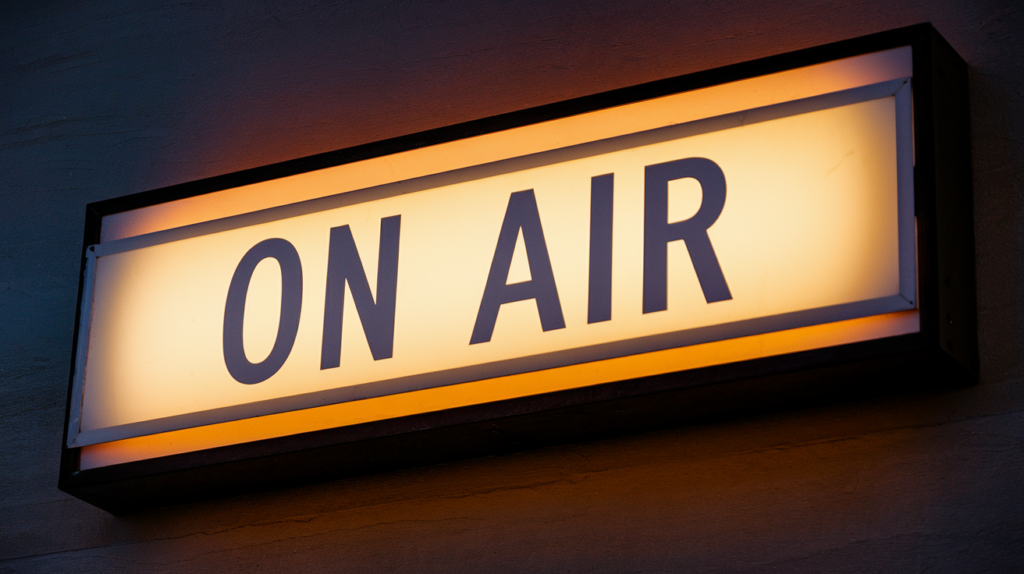In an increasingly globalized world, the demand for high-quality dubbing has never been greater. Accurate lip sync in French Flemish dubbing is crucial for creating a seamless viewing experience that resonates with audiences. When done right, it enhances storytelling and keeps viewers engaged, making them feel as if they’re experiencing the original performance.
Achieving precise lip synchronization requires not just linguistic skills but also a deep understanding of cultural nuances. This delicate balance ensures that emotions and expressions are conveyed authentically, allowing fans to connect with their favorite shows and films on a deeper level. Dive into the fascinating world of French Flemish dubbing and discover how accuracy in lip sync transforms entertainment into art.
Key Takeaways
- Importance of Accurate Lip Sync: Precise lip synchronization is essential for enhancing audience engagement and delivering a seamless viewing experience in French Flemish dubbing.
- Cultural Relevance: Understanding regional dialects and cultural nuances is vital for voice artists to convey authentic emotions, ensuring dialogue resonates with local audiences.
- Collaboration Among Professionals: Successful dubbing requires close teamwork between directors, voice actors, and sound engineers to achieve optimal timing, rhythm, and emotional delivery.
- Technological Advancements: Tools like phonetic analysis software aid in refining lip sync accuracy while emerging AI technologies streamline the dubbing process without compromising quality.
- Challenges of Linguistic Differences: Voice artists must navigate variations in vocabulary and idiomatic expressions between French and Flemish to create relatable dialogue that maintains original intent.
- Future Trends: The integration of VR/AR technologies, sustainability practices, and a focus on cultural relevance will shape the evolution of accurate lip sync in French Flemish dubbing.
Overview of Accurate Lip Sync French Flemish Dubbing
Accurate lip sync in French Flemish dubbing plays a crucial role in delivering authentic and engaging content. This process involves aligning the timing and movement of characters’ lips with the spoken dialogue, ensuring that voiceovers appear natural and believable. Achieving this level of precision requires skilled voice artists who understand not only language nuances but also the emotional context of scenes.
Successful lip syncing demands collaboration between directors, voice actors, and sound engineers. Voice talents must adapt their delivery to fit the visual cues, matching pitch, tone, and rhythm to enhance viewer immersion. Awareness of cultural elements further enriches the performance by infusing authenticity into character portrayals.
Advanced technology aids in refining accurate lip synchronization. Tools such as phonetic analysis software help identify speech patterns that align closely with on-screen actions. Combining these technologies with talented voice over artists results in seamless transitions that elevate storytelling quality.
Investing in high-quality dubbing services ensures that your content resonates with audiences across linguistic boundaries. Focused attention to detail during production leads to memorable viewing experiences that engage viewers emotionally while maintaining fidelity to original narratives.
Importance of Lip Sync in Dubbing
Accurate lip sync plays a critical role in the success of dubbing projects, particularly in French Flemish contexts. It enhances the overall viewing experience and maintains audience immersion.
Cultural Relevance
Cultural relevance in lip sync ensures that the dialogue resonates with local audiences. Voice artists must understand regional dialects and expressions to convey emotions authentically. This understanding allows voice actors to adapt their performances, making dialogue relatable without losing its original intent. Effective cultural adaptation strengthens connections between characters and viewers, fostering an emotional response that elevates storytelling.
Audience Engagement
Audience engagement hinges on convincing voiceovers that match character movements precisely. When voiceover talent aligns their delivery with lip movements, it creates a natural flow that captivates viewers’ attention. Engaging performances by skilled voice artists draw audiences into narratives, promoting investment in storylines and characters. Accurate synchronization also minimizes distractions, ensuring viewers remain focused on plot developments rather than technical inconsistencies.
Techniques for Achieving Accurate Lip Sync
Achieving accurate lip sync requires a combination of skilled voice talent and precise technical techniques. This process enhances the viewing experience by ensuring that dialogue matches character movements seamlessly.
Voice Matching
Voice matching involves selecting a voice artist whose vocal qualities align closely with the original performer. This technique ensures that the dubbed character maintains consistency in tone and emotional delivery. When casting voice actors, consider their ability to mimic accent, pitch, and inflection accurately. Effective collaboration between directors and voice talent is crucial in guiding performances that resonate authentically with audiences.
Timing and Rhythm
Timing and rhythm play vital roles in achieving effective lip sync. Accurate synchronization of speech patterns with mouth movements demands meticulous attention to detail. Voice artists must adapt their delivery speed to match the pacing of on-screen dialogue while maintaining natural expression. Utilizing phonetic analysis software can enhance this process, allowing sound engineers to assess timing discrepancies and make necessary adjustments efficiently. By focusing on these elements, you can create immersive experiences where viewers remain engaged with the narrative without distraction from mismatched audio-visual elements.
Challenges in French Flemish Dubbing
French Flemish dubbing presents unique challenges that require careful attention to linguistic and technical elements. Addressing these challenges ensures high-quality voiceovers that resonate with audiences.
Linguistic Differences
Linguistic differences between French and Flemish dialects significantly impact the dubbing process. Variations in vocabulary, pronunciation, and idiomatic expressions can lead to misunderstandings if not handled correctly. Voice artists must possess a deep understanding of both languages to create authentic dialogue that reflects regional nuances. This expertise allows for the effective adaptation of scripts while maintaining the original intent. Cultural references may also differ, requiring voice actors to modify content without losing its essence, ensuring relatability for viewers.
Technical Considerations
Technical considerations play a critical role in achieving accurate lip sync during the dubbing process. Timing is essential; voiceover talent must match their delivery with character mouth movements precisely. Utilizing advanced technology like phonetic analysis software helps adjust timing discrepancies efficiently, enhancing synchronization quality. Additionally, sound engineers collaborate closely with directors and voice talents to ensure optimal audio quality throughout production. Maintaining consistency in tone and emotional delivery further contributes to creating a seamless viewing experience that captivates audiences and enriches storytelling effectiveness.
Future Trends in Dubbing Practices
Future trends in dubbing practices emphasize technological advancements and evolving audience expectations. Increased demand for high-quality voiceovers drives the need for innovative solutions that enhance accuracy and engagement.
Emerging artificial intelligence technologies streamline the dubbing process. AI algorithms can analyze speech patterns, assisting voice artists in achieving precise lip sync while optimizing script adaptation. This technology allows for faster production times without sacrificing quality, catering to tight deadlines commonly faced by content creators.
Enhanced focus on cultural relevance remains crucial. Voice actors must adapt performances to reflect regional dialects and expressions accurately. This cultural sensitivity strengthens connections between characters and audiences, creating a more immersive experience.
Collaboration among professionals continues to evolve. Voice talent needs to work closely with directors, sound engineers, and other creatives throughout production phases. This teamwork ensures consistent delivery of authentic dialogue that resonates with viewers while maintaining technical precision.
Integration of virtual reality (VR) and augmented reality (AR) into dubbing processes presents new opportunities. These technologies require voiceover artists to convey emotions in dynamic environments where visual elements significantly influence storytelling.
Sustainability in production practices emerges as a key concern. Adopting eco-friendly methods reduces waste associated with traditional recording techniques while promoting responsible resource usage within the industry.
Future trends indicate a shift towards utilizing advanced technology, fostering collaboration among creative teams, prioritizing cultural relevance, embracing immersive experiences through VR/AR integration, and adopting sustainable practices—all contributing to the evolution of accurate lip sync French Flemish dubbing.
Conclusion
Accurate lip sync in French Flemish dubbing is vital for creating an engaging viewing experience. It’s not just about matching words to movements; it’s about conveying emotions and cultural nuances that resonate with audiences. Skilled voice artists and advanced technology work hand in hand to ensure that every dialogue flows naturally.
As you consider the impact of dubbing on storytelling, remember the importance of authenticity and precision. Investing in high-quality dubbing services will not only elevate your content but also foster deeper connections with viewers across language barriers. Embracing these practices prepares you for future trends, ensuring your projects remain relevant and captivating in a globalized world.
Frequently Asked Questions
What is the significance of high-quality dubbing in global entertainment?
High-quality dubbing enhances storytelling by creating an immersive experience for viewers. It allows audiences from different linguistic backgrounds to enjoy content while ensuring that emotions and cultural nuances are accurately conveyed.
Why is accurate lip synchronization important?
Accurate lip synchronization ensures that voiceovers appear natural and believable. It aligns character movements with spoken dialogue, minimizing distractions and allowing viewers to focus on the narrative effectively.
How do skilled voice artists contribute to dubbing quality?
Skilled voice artists bring linguistic proficiency and cultural understanding to their performances. Their ability to match vocal qualities with original performers contributes significantly to the authenticity of the dubbed content.
What challenges are unique to French Flemish dubbing?
French Flemish dubbing faces challenges related to linguistic differences, such as vocabulary and pronunciation variations. Voice artists must understand both languages deeply to create authentic dialogue that reflects regional nuances.
How does technology enhance the dubbing process?
Advanced technologies like phonetic analysis software improve timing accuracy in lip sync. These tools help streamline production processes, enabling faster turnaround times without compromising quality or engagement.
What future trends are influencing dubbing practices?
Future trends include technological advancements, increased demand for high-quality voiceovers, and the incorporation of virtual reality (VR) into dubbing processes. Sustainability concerns also drive eco-friendly methods within the industry.
Why is cultural relevance important in dubbing?
Cultural relevance ensures that dialogue resonates with local audiences by reflecting regional dialects and expressions accurately. This connection fosters emotional responses, enhancing viewer engagement with the story being told.







